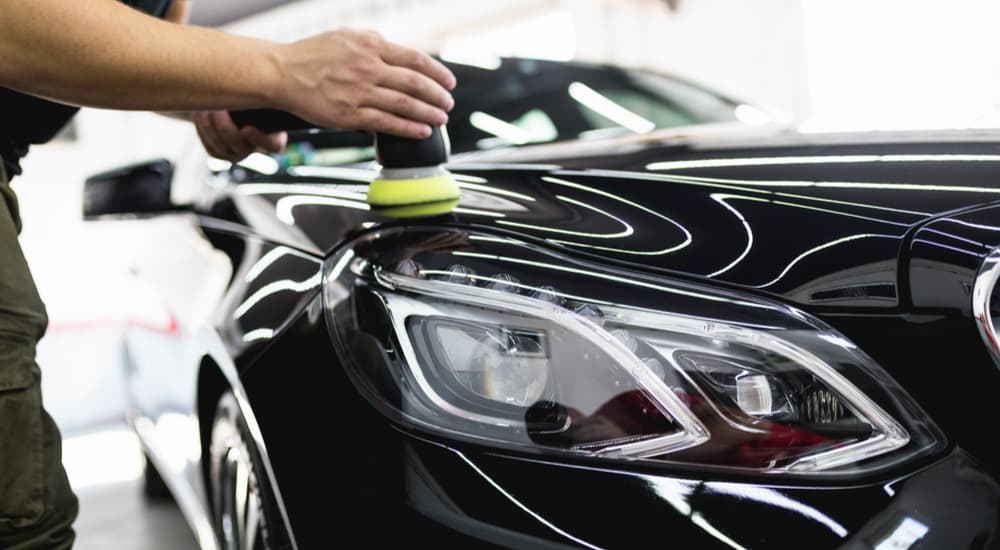Your current vehicle has thousands of miles on the odometer and has served you well for at least a decade, but you’re ready for an upgrade. So how do you sell your vehicle, especially one that most buyers might deem as past its prime? Is it even possible, or is your search for the best way to sell your car hopeless? Fortunately, all hope isn’t lost, as your older car might be worth more than you think.
The demand for used cars is incredibly high, with the used car market moving 40.9 million units in 2021. Used cars are a hot commodity, more so than newer models, because of their more affordable price tags, better overall value, and the rising costs of new models as automakers face increased production costs paralleled with component and parts shortages. But how does this serve you and work to your advantage?
This demand makes your car, even a 20-year-old model with 150,000 miles, incredibly valuable when it’s time to sell or trade. Many drivers are looking for older, budget-friendly models that still have plenty of life in them. So, what can you do to get the most for your vehicle? That’s what we’re here to answer.
#1: Know Your Selling Options
You have a couple of choices when it’s time to sell your vehicle. You can either sell your car privately or to a dealership. There are advantages and disadvantages to each, so it’s crucial to weigh your options. For example, selling your vehicle privately requires a significant investment of time and money because you must prepare the car, which often includes paying for an inspection to give drivers confidence in its operability. You’ll also spend a lot of time advertising the vehicle, filtering potential buyers from scammers, and overseeing all the paperwork to finalize the sale after negotiations.
In contrast, selling your car to a dealership is more convenient because you can rely on a dealership’s expertise. Buying and selling cars is the basis of every dealership’s operation, so they’ve streamlined the process. Dealerships especially love purchasing older vehicles with higher mileage because they are top sellers at wholesale auctions, particularly with the market’s current demand. While you may make more money from selling your car privately, any time and investment you make in preparing the vehicle is an expense that a dealership doesn’t require.

#2: Depersonalize Your Vehicle
Whether your car is 10, 13, or 20 years old, you’ve likely made it your own with a few personal touches. These personalizations might include unique bumper stickers, seat covers, floor mats, air fresheners, and window decals. It can also include personal items like sunglasses, garage door remotes, charging cables, bags, backpacks, and other gear.
Removing these items from your car gives you a blank canvas to work from as you take the next step. Ideally, your goal is to encourage the next buyer to see the vehicle neutrally and as it is. If selling privately, this means giving the potential buyer a chance to see themselves in the car, truck, or SUV. When selling to a dealer, it provides the dealership with the complete picture without any unnecessary trimmings or effects.
#3: Deep Clean
You only have one chance to make a first impression; the same is true for your vehicle. Once you remove all your personal items, it’s time to take inventory of your car, truck, or SUV. Look over the vehicle objectively, noting any areas that need repair. For example, you may find a stain on the floor mat, a tear in the upholstery, or a broken taillight. These are relatively easy fixes that, when repaired, can add value to your vehicle and make it more enticing to a dealership or private buyer.
As you note these repairs, start the deep cleaning process. Experts recommend washing your vehicle at the very least but encourage sellers to take the next step to get the most for their car. These next steps include deep cleaning the interior, wiping down the dashboard, adding new floor mats, and shining the wheels. You can even opt to have the vehicle professionally detailed, leaving the experts to get your car as close to its like-new condition as possible.
#4: Do Your Homework
One of the most critical steps in preparing your car to sell is doing your homework ahead of time. This goes beyond preparing your vehicle and requires being realistic about your vehicle’s condition and what it’s worth. Why is this important? You’ll likely negotiate the price whether you sell privately or to a dealership. Negotiating blindly or without any idea of your car’s value is an oversight that most sellers can’t afford to make.
Let’s say that your 10-year-old Toyota Camry is in good condition, has less than 120,000 miles on the odometer, and has been adequately maintained. Nevertheless, you’re worried that its high mileage will dramatically reduce its value. Even so, you’re hoping to get at least $10,000 for the sedan, but that number is based on your personal experience and not on the current market. This is when it’s vital to do your homework and put your emotions aside.
The number on the odometer never tells the whole story. For many, high-mileage vehicles aren’t ideal because it means they’re likely past their prime. However, this isn’t always the case, as automakers like Toyota and Honda are renowned for building models that can log hundreds of thousands of miles without missing a beat. In these instances, mileage isn’t the only factor determining the vehicle’s worth.
Online tools like Kelley Blue Book recognize as much and use data like mileage, condition, age, and location to determine a vehicle’s fair market value. These factors eliminate any emotion, relying solely on facts and industry trends. As a result, you may find that your 10-year-old Camry is worth more than you anticipated, which gives you ample room to negotiate a fair price that puts more money in your wallet.

Knowledge Is Power
The most crucial thing to remember when selling your vehicle is that age and mileage don’t tell the entire story, at least not in today’s market. Growing demand in the automotive industry has set the used car market ablaze, especially with automakers struggling to build new models due to component shortages and rising costs. As a result, the price of new models continues to increase, forcing drivers to look for more affordable alternatives.
While used cars haven’t escaped the trend of rising price tags, something remarkable is happening in the industry. Older models with high mileage are in greater demand, which puts more money in your wallet. Consumers are looking for incredible values on the used lot, even if it means exchanging that new car smell for a 10-year-old model with 80,000 miles on the odometer. The exchange is worth it, especially when the price is right.
So, keep the current market and these tips in mind as you prepare to sell your car. While older models weren’t always enticing to buyers, that’s no longer the case. This new reality gives you more power when it’s time to sell and can make a significant impact when you’re looking at upgrading your ride for a newer and more efficient model.



